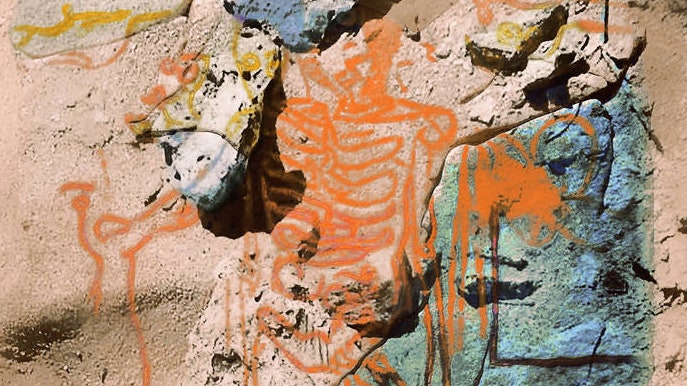
When Boiler Room touched down in Ho Chi Minh City last year, genre-agnostic promoters Nhạc Gãy tapped experimental music collective Rắn Cạp Đuôi to warm up the club with three drummers and a blanket of guitar fuzz. After their initial ruckus, Rắn Cạp Đuôi debuted unreleased material that would become their latest album, *1, club-testing four tracks (“Bloody,” “What Cherubs,” “Pressure,” and “Straws”) that ended up on the final release. Now *1 arrives courtesy of Gãy’s associated label, combining the electronic jetsam of Ngủ Ngày Ngay Ngày Tận Thế (meaning “sleeping through the apocalypse”) with rave-inspired optimism. *1 features the same mode of rapid-fire digital collage as Rắn Cạp Đuôi’s breakthrough, but this time, instead of hitting snooze on the end of the world, they dance towards its salvation and provide a dewy glimpse of what might lie on the other side.
“Bloody” has both dance and dew. The first half, all blistering breaks and distorted kicks, propels us to the second, a drumless interpolation of Baroque harmonies that dissolves into a tranquil, watery abyss. An earlier version of “Bloody” served as the soundtrack for SỐNG VỚI LŨ, a 2021 short film by Gãy in response to art platform CIRCA’s question: “Where do we go from now?” The title of Gãy’s film translates to “living with flood,” an acknowledgement that Southeast Asian countries are already facing the brunt of the impending climate apocalypse. The early version includes howling by Ngo Phuong Linh accompanying a frenetic montage of rave footage and videos depicting Vietnam’s increasingly vicious monsoon season.
The album’s maximalism recalls the cybernatural sonics of eco grime and Martine Tucker’s insect electronica. While there are quantized rhythms in most of these tracks, the songs’ stochastic textures mirror the seeming randomness of ecological field recordings. “What Cherubs” opens with an angelic chorus interspersed with birdsong that sounds almost digitally generated, pausing for a bit of guitar tuning that ushers in the drop. “Nhộng Tằm” (which translates to “silkworm pupae,” a popular street food in Vietnam, Korea, and other countries in Asia) presents a palimpsest of sounds that blur together, a presentation of the sample folder as a digital biome. A byproduct of the silk industry repurposed for nutrition in the face of poverty, the silkworm pupa might be the perfect biofuturist metaphor for the entanglement of humans, technology, and nature.
These themes come to a blissful head on “Pressure,” the album’s standout track. After a short bout of scene-setting whirrs and strings comes an absolutely stunning segment of what I can only call shoegaze breakcore, a revelation of a melody emanating through the din of glitch and drums. The breaks give way to layers of kèn bầu drone; not the funereal kèn bầu that marked their last record, but a celebratory use of the instrument that marks a new beginning. As with all beginnings, there are some rough patches—the dark underbelly of “Pressure” rears its head in its outro, and an anguished scream punctuates the eco-futuristic ambience of the next track, “Mang Theo Tôi Nữa.” But the closing “Bugs Life” reprises the transcendence of “Pressure,” breaks and all, carrying that optimism forward with narration from Vũ Hà Anh that prefigures an astrally projecting trance melody. The cool pessimism of Ngủ Ngày Ngay Ngày Tận Thế turns to light, and the only way to go from here is up.













